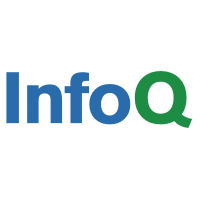
Safety researchers disclosed a few new variants of the cache poisoning assault very first talked over at the 2018 DEFCON conference. These a few new assaults are becoming classified as cache poisoning denial of services (CPDoS) assaults. These vulnerabilities allow an attacker to inject their very own destructive articles to be served by the cache in lieu of the envisioned content.
The a few attacks talked about in a paper penned by Hoai Viet Nguyen and Luigi Lo Iacono from Cologne University and Hannes Federrath from the University of Hamburg all abide by a equivalent pattern. An attacker sends a easy HTTP request that contains a destructive header focusing on a source on a world wide web server. That ask for is processed by an intermediate cache which does not use the selected header aspects as section of its cache key. This ask for is forwarded to the origin server which returns an mistake web page owing to the destructive header articles. This error web page is then cached and served every time that source is requested by other people.

There are 3 precise flavors of attack disclosed right here. In the to start with attack, HTTP Header Strategy Override (HMO), an attacker requires advantage of some website frameworks that allow for overriding HTTP solutions despatched in an HTTP request. Many middleman methods these types of as proxies, load balancers, caches, and firewalls only help the GET and Article verbs. To perform all over this some Rest-dependent APIs and world-wide-web frameworks present headers this kind of as X-HTTP-Method-Override, X-HTTP-Approach, or X-Method-Override to assist these blocked solutions.
In this exploit, an attacker sends a GET ask for with the X-HTTP-Process-Override set to Article. While the cache interprets this as a GET ask for, the web application works by using the X-HTTP-Method-Override value and interprets this as a Put up. Assuming that the web application does not put into action business logic for Put up on this route an error is returned which is then cached as the GET reaction.
In the HTTP Header Oversize (HHO) exploit, the attacker will take edge of discrepancies in the definition of size limits for HTTP request headers. As the HTTP regular does not define boundaries for HTTP request header dimensions, intermediate devices, internet servers, and world wide web frameworks have described their own. For illustration, Apache HTTPD has a header sizing limit of 8,192 bytes. On the other hand, AWS CloudFront makes it possible for up to 20,480 bytes. In this example, considering the fact that the cache accepts a bigger header dimension limit than the origin server, an attacker can craft a GET ask for with a header larger sized than the size supported by the origin server but smaller than the limit for the cache. The origin server will send out an mistake reaction which will then be cached for that GET ask for.
In the closing disclosed exploit regarded as HTTP Meta Character (HMC) the attacker attempts to bypass the cache with a ask for header that includes hazardous meta figures (e.g. n, r, a). If the cache forwards the request devoid of blocking or sanitizing the origin server might classify the message as destructive and return an mistake web site. As in the HHO exploit, that mistake website page is cached in lieu of the appropriate response to that GET ask for.
Cloudflare unveiled a site article outlining the recommendations for their clientele. For most buyers of Cloudflare, nothing at all wants to be accomplished. Having said that, users who are working unpatched variations of Microsoft IIS with ask for filtering enabled on origin or have pressured caching of HTTP response code 400 via the use of their Cloudflare Workers are recommended to make some configuration modifications. Cloudflare notes that they have not viewed any attempts to leverage these exploits on their infrastructure.
The authors also notified the AWS CloudFront group of these exploits. Even though the AWS team stopped caching error webpages with an HTTP 400 position code by default, the review authors famous that AWS “suggests consumers to deploy an AWS WAF in front of the corresponding CloudFront instance. AWS WAF makes it possible for defining principles which fall destructive requests right before they achieve the origin server.”
Microsoft fixed this difficulty less than CVE-2019-0941. The Engage in 1 framework unveiled updates in versions 1.5.3 and 1.4.6 to restrict the effects of the X-HTTP-Approach-Override header. It is recommended to update to one of these versions to mitigate CPDoS attacks. Although the exploit was disclosed to the Flask staff, the researchers observe that they received no response from the advancement staff.
The researchers have unveiled their exploration paper on the CPDoS assaults. As nicely they will be presenting at the approaching CCS 2019 convention. Extra info can be uncovered on the CPDoS site.







